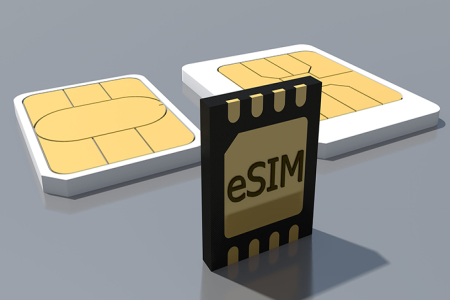What is eSIM Technology? An Overview of eSIM

What is eSIM Technology? An Overview of Embedded SIMs
eSIM, short for "embedded SIM," is a relatively new technology that is quickly gaining popularity in the mobile device space. This innovative technology allows for the use of SIM cards without having to physically insert them into a device. Instead, the SIM card information is stored directly in the device's hardware.
In this article, we'll take a closer look at eSIM technology, its benefits, and how it works. We'll also discuss potential applications in the Internet of Things (IoT) space and provide some examples of eSIM use cases.
Advantages of eSIM Technology
One of the main advantages of eSIM technology is the convenience it provides. With eSIMs, you don't have to swap SIM cards when switching between different carriers or networks. Instead, you can simply download the necessary information for the new carrier onto the eSIM, making switching carriers much more efficient.
Another advantage of eSIM technology is that it allows for more streamlined device design. Since the SIM card slot takes up space in a device, not having to include it can lead to thinner, more compact designs. Additionally, the lack of a physical SIM card slot also means that devices can be made more resistant to water and dust, which is a significant advantage for users who need their devices to be durable.
eSIM technology also has many potential applications in the IoT space. Since eSIMs can be programmed remotely, they can be used to activate and deactivate IoT devices without the need for physical interaction. This makes it easier to manage large numbers of devices remotely and can reduce the need for physical maintenance.
How eSIM Technology Works
The process of activating an eSIM begins with the user selecting a carrier and downloading their information onto the eSIM. This is typically done using an activation code provided by the carrier.
Once the eSIM has been activated, the device can connect to the carrier's network and begin using their services. When the user wants to switch carriers, they can simply download the new carrier's information onto the eSIM, without the need for a physical SIM card swap.
Examples of eSIM Use Cases
One example of eSIM use is in the smartwatch space. Smartwatches with eSIM technology can be used as standalone devices, without needing to be tethered to a smartphone. This is because the eSIM allows the smartwatch to connect directly to a carrier's network.
Another example of eSIM use is in the travel industry. Some countries require visitors to purchase local SIM cards in order to access the internet or make phone calls. With eSIM technology, travelers can simply download the necessary information onto their eSIMs, without the need to physically swap SIM cards.
Conclusion
eSIM technology is a game-changer in the mobile device space. It provides convenience, streamlined design, and potential applications in the IoT space. With eSIMs, users no longer need to physically swap SIM cards when switching carriers, making the process much more efficient. As the technology continues to develop, we can expect to see even more innovative use cases in the future.

Thanks for your comment, our team will review your comment before it is published